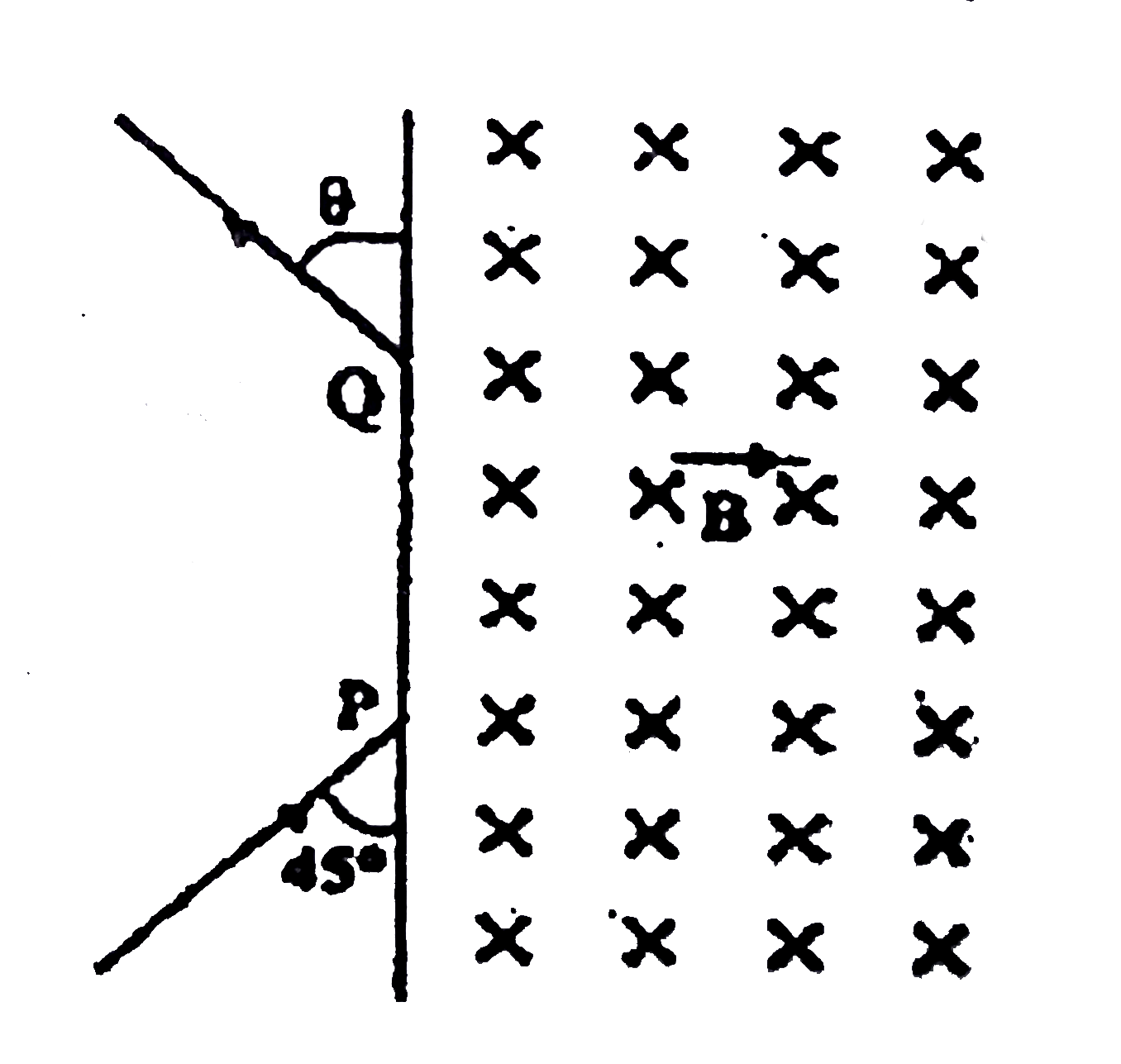The half life of a stream of radioactive particles moving along a straight path with a constant kinetic energy of 4eV is 1 minute. The percentage of particles which decay before travelling a distance of 3.6 Km is ____.
(Mass of the radioactive particles = 3.2×1021kg and charge of the elecrtron = 1.6×10−19C)
37.5
87.5
75
175
The correct Answer is:B
Answer(2) Time taken to travel a distance of 3.6 km is, t = D/V where, D = 3.6XX103
V=√2×K.Em=√2×4×1.6×10−193.2×10−21=20ms.
(∴ givenK.E=4eV<br>e=1.6×10−19C
m=3.2×10−21kg.
⇒t=3.6×10320×60min=3min .
t = 3 half life times In three half life times, the number of particles decayed, .
=(N∘−NN∘)×100 .
=(8N∘−N∘8/N∘)×100(∴N=N∘8) .
= 78×100=87.5%.
Similar Questions
There is a stream of neutrons with a kinetic energy of 0.0327 eV . If the half-life of neutrons is 700 s , what fraction of neutrons will decay before they travel is distance of 10 m ? Given mass of neutron = 1.676 xx 10^(-27) kg .
View SolutionWhat percentage of K.E. of a moving particle is transferred to a stationary particle, when moving particle strikes with a stationary particle of mass (a) 19 times in mass (b) equal in mass (c) (1)/(19) th of its mass ?
View SolutionThe half-life of a radioactive substance is 30 minutes, The time (in minutes) taken between 40 % decay and 85 % decay of the same radioactive substance is.
View SolutionA particle of mass 1.6xx10^(-27) kg and charge 1.6 xx 10^(-19) coulomb enters a uniform magnetic field of 1 Tesla as shown in the figure. The speed of the particle is 10^7 m//s . The distance PQ will be
View SolutionThe half life of a particle of mass 1.6xx10^(-26) kg is 6.9 s and a stream of such particles is travelling with the kinetic energy of a particle being 0.05 eV. The fraction of particles which will decay when they travel a distance of 1 m is -
View Solutionएक प्रोटॉन एकसमान क्षेत्र में गतिज ऊर्जा 10 eV से एक वृत्ताकार मार्ग में गति कर रहा है । उसी क्षेत्र में तथा उसी पथ पर गति करने वाले α कण की गतिज ऊर्जा क्या होगी ? (α कण का आवेश प्रोटॉन के आवेश का दोगुना तथा द्रव्यमान चार गुना होता है ) ।
View SolutionAn alpha particle of charge 3.2×10−19C and mass 6.8×10−27Kg is initially moving at speed 107ms when it is at far distance from another fixed point charge 112×10−19C. Find the distance of closest approach.
View SolutionThe half life of a stream of radioactive particles moving along as straight path with a constant kinetic energy of 4 eV is 1 minute. The percentage of particles which decay before travelling a distance of 3.6 km is (Mass of the radioactive particles = 3 . 2 xx 10 ^(-21) kg and charge of the electron = 1.6 xx 10 ^(-19) C ).
View SolutionWhat percentage of kinetic energy of a moving particle is transferred to a stationary particle, when moving particle strikes with a stationary particle of mass, 9 times in mass
View SolutionThe de Broglie wavelength of an electron (mass =1 xx 10^(-30)kg , charge =1.6 xx 10^(-19)C ) with a kinetic energy of 200eV is (Planck's constant =6.6 xx 10^(-34)Js )
View SolutionThe half-life of a radioactive substance is 30 minutes, The time (in minutes) taken between 40 % decay and 85 % decay of the same radioactive substance is.
View SolutionAn alpha -particle of mass 6.4 xx 10^-27 kg and charged 3.2 xx 10^-19 C is situated in a uniform electric field of 1.6 xx 10^-5 V m^-1 . The velocity of the particle at the end of 2 xx 10^-2 m path when it starts from rest is
View SolutionWhat percentage of kinetic energy of a moving particle is transferred to a stationary particle it strikes when the stationary particle has a mass (a) 19 times (b) equal to (c) 1/19 times the mass of the moving particle ?
View SolutionThe half life of a particle of mass 1.6 xx 10^(-26) kg is 6.9 s and a stream of such particles is travelling with the kinetic energy of a particle being 0.05 eV. The fraction of particles which will decay when they travel a distance of 1 m is
View SolutionA particle of mass 1.6×10−27kg and charge 1.6×10−19 coulomb enters a uniform magnetic field of 1 Tesla as shown in the figure. The speed of the particle is 107m/s. The distance PQ will be

View Solution

